
Dafne Muntanyola-Saura
Creativity is not only interactive but social. I am interested in understanding creative work through video analysis, developing research tools and interdisciplinary models based on distributed and embodied cognition. I also have a strong side topic of interest, gender in everyday life, in science and in the arts. I belong to the following research groups: IET-QUIT (UAB), ACF (UAM), MUSYCA (UCM), ICL (UCSD).
I believe we live in a multilingual world, and I think this is a good thing. I write and teach in Catalan, Spanish, French, Italian & English. My courses include Sociology of Mass Culture, History of Social Thought in Madrid, Ethnographical Methods, Cognitive Ethnography in Dance, Interviewing Methods, and Expert Cognition.
My ethnographical and empirical work is always part of a broader theoretical model that integrates the observation of the artists decision-making with social stratification, namely through concepts such as field, habitus (Panofsky, Bourdieu), epistemic cultures (Knorr Cetina), multimodal interactive systems (Alac, Kirsh), embodied cognition (Dreyfus, Clark) and Cicourel's approach to empirical research.
I attended the Masters in Social Sciences from Stockholm University, and obtained in 2008 a PhD in Sociology from the Universitat Autònoma de Barcelona, with a visual ethnography of a medical team. I completed an intensive filmmaking workshop at the New York Film Academy, and during my PhD training years I was supervised by Aaron Cicourel.
In 2009-2010 I was a Postdoc Researcher with a Caja Madrid Scholarship at Université de Nice (France) at the LASMIC directed by Joel Candau,, supervised by Bernard Conein, and a Fulbright Scholar at University of California, San Diego, working with Prof. David Kirsh.
http://orcid.org/0000-0002-2684-9577
I believe we live in a multilingual world, and I think this is a good thing. I write and teach in Catalan, Spanish, French, Italian & English. My courses include Sociology of Mass Culture, History of Social Thought in Madrid, Ethnographical Methods, Cognitive Ethnography in Dance, Interviewing Methods, and Expert Cognition.
My ethnographical and empirical work is always part of a broader theoretical model that integrates the observation of the artists decision-making with social stratification, namely through concepts such as field, habitus (Panofsky, Bourdieu), epistemic cultures (Knorr Cetina), multimodal interactive systems (Alac, Kirsh), embodied cognition (Dreyfus, Clark) and Cicourel's approach to empirical research.
I attended the Masters in Social Sciences from Stockholm University, and obtained in 2008 a PhD in Sociology from the Universitat Autònoma de Barcelona, with a visual ethnography of a medical team. I completed an intensive filmmaking workshop at the New York Film Academy, and during my PhD training years I was supervised by Aaron Cicourel.
In 2009-2010 I was a Postdoc Researcher with a Caja Madrid Scholarship at Université de Nice (France) at the LASMIC directed by Joel Candau,, supervised by Bernard Conein, and a Fulbright Scholar at University of California, San Diego, working with Prof. David Kirsh.
http://orcid.org/0000-0002-2684-9577
less
Related Authors
Daniel D. Hutto
University of Wollongong
Noel B. Salazar
KU Leuven
Derek B Scott
University of Leeds
Judith L Green
University of California, Santa Barbara
T. Alexandra Beauregard
Birkbeck College, University of London
Mariya Ivancheva
University of Strathclyde, Glasgow
Nicola Jane Holt
University of the West of England
Michael Spivey
University of California, Merced
Andreas Treske
Bilkent University
Naim Kapucu
University of Central Florida
InterestsView All (58)
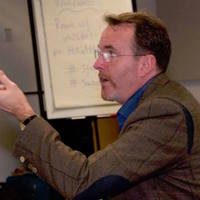

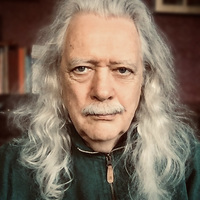


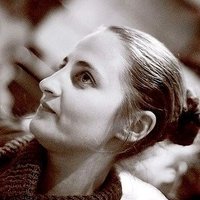

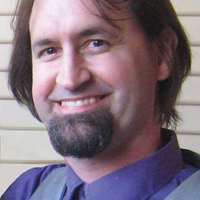
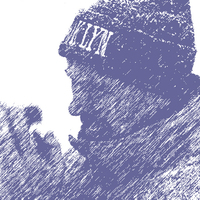
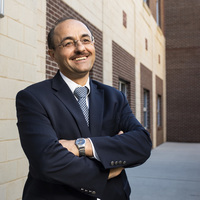
Uploads
Papers (in English) by Dafne Muntanyola-Saura
Background: Research on parental regret, a subject only recently broached by analysts, tends to focus on motherhood. Regretting fatherhood has been only scantly researched. In this study we test the effects of intensive fathering, the use of different care resources, economic and employment conditions, and satisfaction with respondents’ partnership on their regret for having children.
Method: The analysis is based on an online survey of parents of children under 7 years old (QUIDAN Survey) A total of 3100 parents were interviewed, with the sample evenly distributed by sex and youngest child’s age, and proportional by parents’ highest level of schooling and place of residence. The weighted subsample used in this article included 1374 fathers. The hypotheses are tested with logistic regression.
Results: The social factors associated with a greater likelihood of regret include circumstances that challenge men’s role as primary breadwinner, a negative impact of fatherhood on job career, a high dependence on grandparents for balancing working and private lives and partnership dissatisfaction. A relationship between intensive fathering and regret could not be observed.
Conclusion: The findings show the extent of paternal regret to be fairly limited, similar to the proportion reported for maternal regret. Paternal regret is mainly associated with family and working circumstances.
really happens when dancers act as experts in the field, with a culturally defined normative frame.
and happenings in festivals everywhere. The body is the subject matter of art fairs like ARCO, festivals like Biennale or exhibits such as Dans l’atelier at the Petit Palais. In all these examples, the body is taken as a tool for thinking as well as a place for creativity. We claim that artistic practice goes beyond the body and involves a certain level of social interaction. Thus, the unit of analysis of artistic practice cannot be the artist/performer/participant bodies. Individual actions cannot be fully understood without taking into account the social context of the studio. Following De Jaegher, Di Paolo & Gallagher (2010), we define social interaction as a given dyadic coordination of interactivity.
experience. His capacity for bringing up deep theoretical
and methodological issues through everyday examples and
lay terms makes lunch a highly enjoyable and academically
intense encounter. We met on a Monday afternoon, at
the home of Carlos Lozares and Anna Estany.
Background: Research on parental regret, a subject only recently broached by analysts, tends to focus on motherhood. Regretting fatherhood has been only scantly researched. In this study we test the effects of intensive fathering, the use of different care resources, economic and employment conditions, and satisfaction with respondents’ partnership on their regret for having children.
Method: The analysis is based on an online survey of parents of children under 7 years old (QUIDAN Survey) A total of 3100 parents were interviewed, with the sample evenly distributed by sex and youngest child’s age, and proportional by parents’ highest level of schooling and place of residence. The weighted subsample used in this article included 1374 fathers. The hypotheses are tested with logistic regression.
Results: The social factors associated with a greater likelihood of regret include circumstances that challenge men’s role as primary breadwinner, a negative impact of fatherhood on job career, a high dependence on grandparents for balancing working and private lives and partnership dissatisfaction. A relationship between intensive fathering and regret could not be observed.
Conclusion: The findings show the extent of paternal regret to be fairly limited, similar to the proportion reported for maternal regret. Paternal regret is mainly associated with family and working circumstances.
really happens when dancers act as experts in the field, with a culturally defined normative frame.
and happenings in festivals everywhere. The body is the subject matter of art fairs like ARCO, festivals like Biennale or exhibits such as Dans l’atelier at the Petit Palais. In all these examples, the body is taken as a tool for thinking as well as a place for creativity. We claim that artistic practice goes beyond the body and involves a certain level of social interaction. Thus, the unit of analysis of artistic practice cannot be the artist/performer/participant bodies. Individual actions cannot be fully understood without taking into account the social context of the studio. Following De Jaegher, Di Paolo & Gallagher (2010), we define social interaction as a given dyadic coordination of interactivity.
experience. His capacity for bringing up deep theoretical
and methodological issues through everyday examples and
lay terms makes lunch a highly enjoyable and academically
intense encounter. We met on a Monday afternoon, at
the home of Carlos Lozares and Anna Estany.
este artículo descubre, en un primer
apar tado teórico, algunas condiciones básicas sobre las
relaciones entre la teoría y la práctica arquitectónicas. La
primera condición es que, tal como ocurre con la educación
y con la legislación, la investigación arquitectónica
se basa en una sabiduría teórica orientada a la práctica,
como ya predijo Aristóteles hace mucho tiempo. La
segunda condición es la necesidad de que se desarrollen
teorías arquitectónicas nuevas que informen del
poder del diseño construido y del uso social del espacio,
el transporte, la comunicación, etc. La tercera condición
es que el lugar específico de investigación en arquitectura
tiene que ser la investigación de “lugares”, donde los
arquitectos no pueden ser reemplazarlos fácilmente por
otros expertos.
la cultura hi juga un paper important. Nombrosos estudis en ciències socials i cognitives ho demostren empíricament (Bourdieu,
1979; Becker, 1982; 2002; Sennett, 2012; Muntanyola-Saura, 2012; 2014; 2016). La creativitat com a forma de cognició social
forma part d'un context institucional. No obstant això, la influent branca culturalista de la sociologia cognitiva (CCS) redueix la
creativitat a un nivell psicològic cognitivista (Lizardo i Strand, 2010). Partim aquí de la conjectura que és possible per a la sociologia
de la cultura aprofitar el paradigma naturalista de la cognició per explicar la creativitat sense caure en postures reduccionistes
ni atomistes. Per tant, el cos de l'article és una revisió bibliogràfica que sense tenir la ambició de ser exhaustiva sí que ofereix
una mirada completa sobre uns models pragmàtics i integrats de creativitat. Es té en compte la diversitat de propostes teòricoempíriques
que existeixen, per tal d'identificar els postulats de partida dels autors que centralitzen el debat tant a nivell macro
com a nivell micro. Els estudis analitzats presenten processos intersubjectius de creació i transmissió de criteris més o menys
legítims de consum cultural, com ara categoritzacions, avaluacions i judicis estètics. La conclusió és que la perspectiva sociològica
pot reforçar críticament la creativitat.
(ESP)En el contexto cambiante de los consensos básicos que constituyen la cultura legítima y las definiciones de creatividad, la sociología
de la cultura juega un papel importante. Numerosos estudios en ciencias sociales y cognitivas lo demuestran empíricamente
(Bourdieu, 1979; Becker, 1982; 2002; Sennett, 2012; Muntanyola-Saura, 2012; 2014; 2016). La creatividad como forma de cognición
social forma parte de un contexto institucional. Sin embargo, la influyente rama culturalista de la sociología cognitiva (CCS) reduce
la creatividad a un nivel psicológico cognitivista (Lizardo y Strand, 2010). Partimos aquí de la conjetura de que es posible para
la sociología de la cultura aprovechar el paradigma naturalista de la cognición para explicar la creatividad sin caer en posturas
reduccionistas ni atomistas. Por lo tanto, el cuerpo de este artículo es una revisión bibliográfica que sin tener la ambición de ser
exhaustiva sí que ofrece una mirada completa sobre unos modelos pragmáticos e integrados de creatividad. Se tiene en cuenta
la diversidad de propuestas que existe para identificar los postulados de partida de los autores que centralizan el debate tanto a
nivel macro como a nivel micro. Los estudios analizados presentan procesos intersubjetivos de creación y transmisión de criterios
más o menos legítimos de consumo cultural, como por ejemplo categorizaciones, evaluaciones y juicios estéticos. La conclusión
es que la perspectiva sociológica puede reforzar críticamente la creatividad.
(eng) The Sociology of Culture has much to say when it comes to the ever-changing general consensus on what constitutes legitimate
culture and definitions of creativity. The naturalistic studies on cognition in social and cognitive sciences show this empirically
(Bourdieu, 1979: Becker, 1982, 2002; Sennett, 2012; Author, 2014). Creative cognition is part of an institutional context. However,
the influential culturalist branch of cognitive sociology (CCS) reduces creativity to a cognitivist psychological level (Lizardo and
Strand, 2010). We start from the conjecture that the Sociology of Culture can draw on the naturalistic paradigm of cognition to
explain creativity without falling into reductionist or atomist positions. The authors take the diversity of theoretical-empirical
proposals into account in identifying the starting points for focusing the debate at both the macro and micro levels. The body of
the article comprises a literature review which, while not exhaustive, offers a full picture of the pragmatic and integrated models of
creativity. The studies analysed present inter-subjective processes of creation and the transmission of variable legitimate criteria
concerning cultural consumption such as categorisations, evaluations and aesthetic judgments. The sociological perspective
offers scope for strengthening critical tools for examining creativity.
que se vinculan cognitivamente entre sí para construir entornos semánticamente
conectados mediante el Análisis Reticular del Discurso (ARD). El ARD se inspira
en los modelos algebraicos de la Teoría y Análisis de las Redes Sociales (TARS)
para abordar el análisis e interpretación de datos textuales. El artículo, en una primera
parte, va recorriendo las concepciones teóricas que se acercan a una concepción
que vincula una visión del lenguaje entre lo cognitivo y la praxis con una metodología
cuantitativa, como es la Teoría y Análisis de las Redes Sociales (TARS).
La TARS constituye un álgebra flexible y adaptable a cualquier encrucijada relacional,
por lo que se ha adaptado provechosamente al análisis del discurso, conformando
todo un conjunto de análisis conocidos como ARD. La segunda parte del
artículo se centra en un ejercicio de aplicación, cual análisis de caso, que funciona
a modo de ejemplificación de las propuestas teóricas y metodológicas anteriores.
partir de la preeminencia del capital cultural y social. Una ciudad como
Barcelona deviene lugar de llegada y asentamiento de población con
trayectorias y prácticas plurales. Creemos que el lugar urbano de la
intermediación es un atributo cultural a la vez que social de la actividad
de la mediación. Nuestros casos de estudio son tres comunidades
religiosas de la ciudad: la comunidad musulmana pakistaní, la
comunidad sikh y la filipina católica. A partir de una investigación
basada en métodos mixtos, con entrevistas semiestructuradas,
observación y análisis por redes sociales (ARS), delimitamos el lugar
de la mediación y la composición de sus redes personales. Los
resultados obtenidos nos llevan a considerar la sociabilidad y el
sentido del lugar como atributos necesarios de la mediación religiosa.
específicos de la TARS, no particularmente frecuentes en los análisis e interpretación de narraciones y/o discursos. Es también una aportación a los métodos mixtos, concretamente a la interpretación cualitativa de datos cuantitativos.
the dancer belongs to plural context, crossed by artistic and social traditions, which locate the artists in
a given field. We claim that role conflict is an essential component of the structure of collective artistic
creativity. We address the production of discourse in a British dance company, with data that spawns
from the ethnography ‘Dance and Cognition’, directed by David Kirsh at the University of California,
together with WayneMcGregor-Random Dance. Our Critical Discourse Analysis is based on multiple
interviews to the dancers and choreographer. Our findings show how creativity in dance seems to be
empirically observable, and thus embodied and distributed shaped by the dance habitus of the particular
social context.
Keywords: narrative; dance; habitus; emotion; music; memory.
La musicalidad en danza no necesita música. ¿Cómo se se hace aparente entonces la musicalidad, y hasta qué punto es social? Queremos definir la musicalidad en tanto que de habilidad social (Wacquant, Collins). Vamos a analizar cómo los bailarines comparten su juicio artístico al relatar las tareas coreográficas que han seguido en el ensayo de una pieza de danza. Nuestra premisa para este artículo es que la musicalidad forma parte de un vocabulario de motivos de justificación artística. Y que, en tanto que habilidad social, la musicalidad depende de la escucha y la fisicalidad. Para captar la variabilidad de la habilidad social de la musicalidad hemos observado qué sucede cuando el coreógrafo da instrucciones y dirige un ensayo, mediante una etnografia cognitiva de una compañía de danza inglesa. Como parte del corpus de datos recogido, hemos analizado mediante los principios de la teoria fundamentada 11 entrevistas a bailarines y bailarinas. Veremos que la unidad de análisis de este artículo no es ya el bailarín o la bailarína, sino la interacción social como un acoplamiento autoregulado entro dos o más miembros de la compañía. Los resultados muestran cómo la musicalidad es una habilidad social que sólo puede funcionar en relación a una red de habilidades sociales, entre las cuales se encuentra la fisicalidad y la escucha. Se trata, en definitiva, del producto local de la cognición distribuida en el estudio de danza. Palabras clave: musicalidad, danza, fisicalidad, escucha, etnografía, cognición distribuida.
académicas, las divergencias y convergencias entre distintas disciplinas y perspectivas metodológicas o los nuevos desafíos tecnológicos y sociales, y al mismo tiempo presento
ocho preguntas abiertas que han suscitado respuestas de varios colegas: Teresa Torns (Universidad Autónoma de Barcelona), Raimundo Cuesta (Fedicaria), Carlos Lozares (Universitàt Autónoma de Barcelona), Christian Orgaz (Cooperativa de Investigación Social Indaga), Josep Lobera (Universidad Autónoma de Madrid), Cristina Santamarina (CIMOP), Fernando Aguiar (IESA-CSIC), Gloria Domínguez Alegría (Universidad
Complutense de Madrid), Tomás Cano-López (Universidad Autónoma de Barcelona y Teresa González de la Fe (Universidad de la Laguna).
This paper presents a theoretical and methodological discusssion on a visual etnography that took place in a sports training. We propose an integrated model of expert knowledge that explains the swimmers’ and trainers decisión-making as part of the Spanish Olympic team. We Stara with an ethnographic data co- llection that integrates analogical observation, video observation and interviews- The use of analytical tools such as ELAN software puts forward the possibility of measuring social activity not only with statistical models, but also by forma- lizing the interaction and the production of knowledge. We provide a detailed work of transcription and sistematization of visual patterns. Moreover, we make explicit the arquitectonic principles of ELAN software that build our codifica- tion strategy, avoiding the reification of the training process in synchronized swimming. Our results show the rich explanatory power of this mixed research methodology in sport environments, until now dominated by Standard models of research that do not take into account the distributed nature of decision-making in sports.
individual body. Still, the body of the dancer belongs to plural
context, crossed by artistic and social traditions, which locate the artists in a given field. We claim that role conflict is an essential component of the structure of collective artistic creativity. We address the production of discourse in a British dance company, with data that spawns from the ethnography Dance and Cognition, directed by David Kirsh at the University of California, together with WayneMcgregor-Random Dance. Our Critical Discourse Analysis is based on interviews took place during the video-aided ethnography on emotions, music and dance. Our findings show
how how creativity in dance seems to be empirically observable, and thus embodied and distributed shaped by the dance habitus of the particular social context
objetivo es iniciar la construcción de una representación relacional de la mirada
bailada, parafraseando a Simmel (1908) y su teoría del control social relacional. A
partir de un trabajo etnográfico de los procesos de ensayo de una compañía de
danza, explicaremos cómo los bailarines toman decisiones. La distribución de un
cuestionario sobre las interacciones durante los ensayos permite mostrar el habitus
que se configura en la interacción local y social. Ellos y ellas miran, hablan, y se
relacionan en una red de conocimiento distribuido. El análisis de la centralidad, de
los cliques y de lazos simmelianos, realizados gracias a Ucinet, cristalizan la
multiplicidad de roles y de grupos de afiliación de los y las bailarinas.
El objetivo de este artículo es plantear un estado de la cuestión sobre las corrientes teóricas en la sociología de la música actual. A escala internacional, la sociología de la música ha sido un campo pródigo en teorías más que en investigación empírica, sobre todo en la tradición europea. El escenario teórico que encontramos en la sociología de la música sigue el pluralismo paradigmático de la sociología general. Esto se refleja en una variedad de enfoques, que presentaremos aquí, y que diferenciamos según el plano en el que operan: macro, meso y micro. Ofrecemos una síntesis de las propuestas de clásicos como Weber, Adorno, DeNora y Bourdieu, e incluimos nuevas propuestas metodológicas desde el análisis de redes sociales, la etnografía y los estudios culturales. Para consolidar un marco teórico de referencia debemos huir de la trampa postmo- derna, que renuncia a la crítica sociológica, y reconoceremos el carácter necesario de una verdadera teoría social.
Palabras Clave
Adorno; Micro-macro; Pluralismo; Sociología de la música; Teoría sociológica.
"
danza y de un equipo de rodaje televisivo realizadas entre 2006 y 2012 en San Diego,
Londres y Barcelona. El trabajo artístico se produce dentro de una determinada
distribución de capitales simbólicos, eminentemente lingüísticos. Este juego
comunicativo se basa en una cadena de microdecisiones y de negociación de la
incertidumbre en la carrera profesional. La hipótesis que se plantea es que el discurso
profesional esconde los procesos intersubjetivos que se encuentran en la base del la
autoridad artística. Los datos se compone de 40 entrevistas semi-estructuradas.
Mediante un análisis temático de contenido y el uso de ATLAS.ti, hemos definido los
elementos comunicativos que caracterizan la tomas de decisión artísticas. Parece que
el habitus artístico surge del ejercicio cotidiano de la violencia simbólica que configura
la identidad profesional de los directores/coreógrafos en oposición a sus colaboradores.
panorama de la producción eminentemente estadounidense
en cultura y cognición. Su autor, Wayne
Brekhus, es profesor de sociología de la Universidad
de Missouri y pertenece a la que él mismo
denomina escuela zerubaveliana, en homenaje a
Eviatar Zerubavel, profesor de Rutgers University.
Zerubavel es el fundador de la rama culturalista de
la sociología cognitiva, y sus libros Social Mindscapes
(1997) y The Elephant in the Room (2006)
son ya clásicos. Las referencias de Zerubavel,
juntamente con las de Karen Cerulo, profesora de
la misma universidad y editora de la Sociological
Forum, y las de Omar Lizardo, catedrático de la Universidad
de Nôtre-Dame constituyen los tres pilares
de la bibliografía de este volumen.
La razón por la cual empiezo con esta tríada
es porque son nombres que delimitan el alcance
de este libro. Al revisar la lista de referencias
vemos cómo la panorámica de estudios sobre los
elementos cognitivos de las prácticas culturales se
centra en la tradición de la Costa Este. Se excluye
por completo la sociología cognitiva fundacional de
Aaron Cicourel (con Cognitive Sociology de 1974) y
las propuestas internacionales de Marion Fourcade
(2012), TiaDeNora (2014) y Bernard Lahire (2008)
desde UC Berkeley, Exeter y Lyon. Los capítulos uno
a cinco son un compendio de estudios empíricos
sobre diversos fenómenos culturales relacionados
con la percepción, la categorización, las metáforas,
las identidades, el tiempo y la memoria que ofrece
una visión muy parcial de la sociología cognitiva
en cultura. Otra sorpresa se produce al leer la introducción
y las conclusiones, los únicos capítulos
teóricos del libro. Brekhus hace allí su propuesta,
con una clasificación paradigmática de las producciones
que él considera como propias de la sociología
cognitiva de corte culturalista.
En la introducción, Brekhus resume en 5 líneas
la aportación clásica de Berger y Luckmann: “La
construcción social de la realidad es una idea que
fue definida por primera vez y popularizada por
Berger y Luckmann (1966) y es un supuesto básico
para los sociólogos, aunque a menudo se da por supuesto
como talón de fondo sin ser explícitamente
delimitada” (p. 1). Berger y Luckmann, sin embargo,
dedican más de 30 páginas de La construcción
a comentar pasajes de Alfred Schütz, fenomenólogo
social de la New School que brilla por su ausencia
en el volumen que nos ocupa. Dejan muy claro su
continuidad con la obra de Schütz, literalmente
afirmando que “Personalmente debemos la percepción
fundamental de la necesidad de esta redefinición
a Alfred Schütz (…) Schütz se preocupó
sobre todo por analizar la estructura del mundo del
sentido común de la vida cotidiana” (1988: 31-32)
Y un poco más abajo le citan directamente: “El conocimiento
está socialmente distribuido, y el mecanismo
de esta distribución podría ser el objeto de
estudio de una disciplina sociológica”. Parece claro
que Brekhus silenciando esta tradición teórica tiene
la intención de separarse de la fenomenología
social en sociología y reivindicar una perspectiva
teórica propia.
to read account of a 100 years of history. And he does so by getting deep into the cultural and aesthetic transformations of the largest state yueju house in the country, the Shanghai Yueju Company (SYC). The author's double affiliation with the artistic and the academic world provides a unique opportunity for developing and ethnographic study, based on interviews, observation and the author's personal experience. Her book will be of use to academics, cultural policy makers, art curators as well as Art and Humanities students. Haili states in the introduction that in order to understand his object of study he had to pay attention to a subject that he had been avoiding all his life: politics. That is, by explaining the role of the Chinese Communist Party (CCP), both at the state and regional levels, as instigator of the process of marketization. With a comprehensive and reflexive ambition, the book is structured in six thematic
chapters. The first chapter, "Tradition and Modern Opera Productions" is a descriptive account of the changes that shape institutionalized Chinese opera. Following the analysis of Art Worlds by sociologist Howard Becker (1984), the terms convention, innovation and distribution are used efficiently to explain the raise of a new model of urban opera production, the Institutional Actor Theatre.
About Murder?, nueve capítulos sobre las razones, formas y usos del estudio de caso como
método sociológico. Como el mismo autor indica, la mayoría de ellos, a excepción del primero
y del último, son textos retrabajados a partir de diez artículos publicados anteriormente
en inglés, italiano y francés. Nada nuevo bajo el sol, pero la prosa de Becker es siempre
refrescante, y se agradece no tener que ir pescando artículos y tenerlos así reunidos. Se
trata de un libro para ser leído tanto en clase como en el proceso de investigación, de ahí el
tono didáctico y la inclusión de ejemplos extraídos de investigaciones reales de los últimos
cuarenta años. El hilo conductor, como es habitual en la obra del sociólogo de la llamada
Escuela de Chicago, es fácil de seguir: el lector se embarca en un viaje epistemológico sobre
las propias prácticas. La estructura narrativa para cada capítulo se repite a lo largo de la obra.
Se presenta un caso histórico, a poder ser conocido, como, por ejemplo, la abolición de la
esclavitud en Estados Unidos, que luego Becker transforma en problema sociológico con la
formulación de una serie de preguntas de razonamiento analógico. Este método de análisis
se construye a partir de casos de estudio (case studies) definidos por el investigador.
a theory manual on social ontology for a diversity of readers. DeNora claims the need for
adopting a slow sociology that gets into the singularity of practice. Making Sense of
Reality has nine chapters, which do not exceed 15 pages, distributed in three sections
with many examples for an undergraduate classroom.
o Nuevos aspectos en la síntesis de la investigación. Iván Solá. Iberoamerican Cochrane Centre.
o Nuevas herramientas en la investigación audiovisual. Dra. Dafne Muntanyola-Saura. Profesora adjunta. Departamento de sociología. Universitat Autònoma de Barcelona.
o Nuevas herramientas tecnológicas en la recogida de datos. Adolfo Muñoz. Instituto de Salud Carlos III.
o Uso de Big Data en modelos predictivos y explicativos en el ámbito de los cuidados de la salud. David Prieto-Merino. Cátedra de Análisis Estadístico y Big Data, Universidad Católica de Murcia.
The expression “my space” appears constantly in the spontaneous discourse of young mothers, defining a need for autonomy and self-realization that becomes paramount once the baby is born. Among fathers’, the favored claim seems to be the opposite: spending time with their child is described as a way of unwinding from work, and thus a way of constructing this private space. This discursive topos indicates a strongly-gendered construction of roles based on care as a primary activity for mothers, which excludes fathers? Is “my space” paradoxically constructed as opposed to childcare in mothers, while based on it among fathers? What do these discursive differences say about the experiences of mothers and fathers in taking care of their children?
We provide a qualitative thematic analysis (Alonso, 1998) of 10 semi-structured interviews to Spanish mothers and fathers. Since discourse is shaped by age, class, occupation and gender, we created a typology of interviewees restricted to middle class young parents with at least one child (30 to 35 years, since the average motherhood age in Spain is 31 years old), balanced by gender and activity. Given that the unemployment rate in Spain is 26% in 2014, and 57% for those under 25, we balanced our sample to include the corresponding proportions of activity: our interviewees were non active (2), a situation that can hide unemployment or students, employed (4), on parental leave (2), and unemployed (2).
A space of ones own (taking Virginia Woolf’s words) appears to be a fuzzy concept that is strongly context-dependent. Clarifying its meaning through a plurality of methodologies will bring forward elements of the social imaginary on parenthood (Salmon, 2008, Alonso & Fernandez, 2013). Moreover, the recent fashion of sustaining gender differences on neuroscience and developmental psychology (see Muntanyola, 2013 review on Bluhm et al (eds) Neurofeminism) naturalizes these roles and practices related to childcare and parenthood.Subjective social expectations have objective effects in family relationships and identity making and can inform social policies such as parental leaves, daycare resources and equality in labor relations (Torns, 2004; Meil et al, 2007; Carrasco et al, 2011). Since gender is not a local or national topic, we are eager to look into compared frameworks of research across countries and regions (Flaquer, 2004; Wall & Escobedo, 2009; Gornik, Meyers et al, 2009; Degenne, Marry & Moulin, 2011; Rubery & Rafferty, 2013),
Symbolically, we would like to make visible narratives from both partners. We are aware of the absence of the “father” in many narratives on motherhood (Capdevila, 2012), and of the fragmentary presence of fathering (as a perfomative role) in the sphere of childcare and domestic tasks (Romero et al, 2013, Moss & O’Brien, 2010). Still, taking into account the intersubjective and socially constructed nature of parenthood, space cannot be taken exclusively as an atomistic expression of a desire or preference, but as built upon the partner’s role.
Pragmatically, we will discuss the daily practices of subjects to preserve their personal space. Space is an equivalent to personal time, that is, an individualized experience that comes with, but is not just, that of family or work time (Callejo, 2013). Depending on structural social factors, personal space might include activities related to taking care of a healthy and beautiful body, such as waxing or going to the gym; shopping, socially sharing leisure activities with friends; cultural consumption such as reading or watching a movie, or more public activities, such as developing professionally or studying.
The heterogeneity of the concept “my space” makes it a polyvalent operator (Champagne, 1999). We expect this different ways of managing work and care to bring to the table the construction of social identities, ways of understanding fatherhood and motherhood, as well as differences in the conceptions of gender, care, work, autonomy, childcare and pleasure.
used ELAN® developed by the Max Planck Institute for Psycholinguistics, for small-scale interactions. We classified the type of interactions and sorted through the channels of communication that lead to the production and selection of choreographies. As preliminary results, their interactions included cognitive processes that were empirically embodied, situated and distributed. The communication process between the trainers and the synchronized swimmers seems to be shaped by environmental elements such as the music and the water. Plus, there is shared awareness among synchronized swimming professionals of the emotional implication of their interactions. Video-aided ethnography allows to understand synchronized swimming as a sports based on expert social patterns of interaction and creativity.
interviews to fathers following snowball sampling, and a phone survey to 4000 individuals between 25 to 60 years of age with children under 13. We analized our own experience as interviewers on the field in the qualitative phase, as well as face to face interviews to key informants of the phone survey, which was outsourced to the “Centro de Análisis y Documentación Electoral de Andalucía (CAPDEA) in the University of Granada. We compared the use of both techniques in sampling and design, taking interviewing and surveying as situations for mediated communication. Our findings, which we analized with Atlas.ti following the principles of grounded theory, show that the value of the phone as a tool for research is a matter of adequacy to a given methodology, rather than an issue of validity, reliability, or credibility."
field. We analyze the interactive patterns of a British dance company through a video-aided ethnographic work, which included observation and interviewing. Six cameras were used to record the 2 months rehearsal process. At the end of each day, the choreographer and four dancers were selected and interviewed. We considered the choreographer as well as the dancers experts in their domains, with superior knowledge about their activity. As preliminary results, the creative decisions involved in dance are embodied, distributed and mutimodal. We found evidences in the dancers narratives, and in the way choreographers talk about their work.